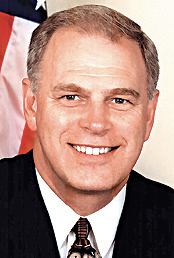Strickland seeks study of sentencing policies

Ohio Governor Ted Strickland (D-Lisbon)
The governor says he won’t build new prisons or reopen closed ones.
COLUMBUS (AP) — Gov. Ted Strickland wants to review a policy that allows prisoners serving short sentences to get out after even shorter stays.
Of the 16,994 short-term inmates admitted to the state’s prison system in 2006, nine were released after one day, 32 were in for a week, 236 were released within 30 days and 2,180 of all inmates sentenced to one year or less were back on the street in three months, The Columbus Dispatch reported Saturday.
Each prisoner cost the state hundreds of dollars to place in the system and $69.40 for each day behind bars.
Strickland, who is facing a shortfall in the next budget year that could reach $1.9 billion, wants to stop the revolving door at Ohio prisons.
“I’ve got serious questions when we get offenders and let them out the day we get them, or after three months or six months,” Strickland said.
Strickland said he wants to ease prison crowding and save state taxpayer dollars at the same time, perhaps by diverting short-term prisoners to community lockups or other alternatives. The total prison population for January was 49,889, or more than 12,000 over designed capacity.
“There isn’t a person in public office that’s not sensitive to the accusation of being soft on crime,” Strickland said. “But you don’t have to be soft on crime to be smart in dealing with criminals.
“We need a rational approach to our criminal justice system, ... one that’s divorced from the silliness of politics.”
Strickland, a former state-prison psychologist, said he has ruled out building any new prisons or reopening closed ones.
However, he is lobbying state lawmakers to hire the Justice Center of the National Council of State Governments to find ways to make Ohio prisons more efficient, less crowded and more safe. The project could cost $100,000 or more.
The center has done studies for Kansas, Texas and five other states. In most cases, its recommendations led to state action that helped reduce the prison population and produced taxpayer savings.
Michael Thompson, the center’s executive director, said drug offenders serving short sentences and parole violators often crowd prisons.
“Would you want this person locked up for a short period of time?” he said. “You spend a lot of money while they’re incarcerated and then push them back on the street with little or no support and supervision. If we’re going to spend that kind of money, what is going to have the greatest impact on public safety?”
Strickland recently took a tour of the Pickaway Correctional Institution in Orient. The prison houses 2,370 offenders, 24 percent more than it was designed to handle.
The governor saw dormitories with prisoners in double bunks about 3 feet apart. Those are wide-open spaces compared with the Lorain Correctional Institution, at 143 percent over capacity, and the Correctional Reception Center, also at Orient, which is 80 percent over capacity.
“You’re going to see inmates stacked up everywhere,” said prisons Director Terry Collins, a 30-year veteran of the system. He said 62 percent of all inmates serve 12 months or less.
 43
43
